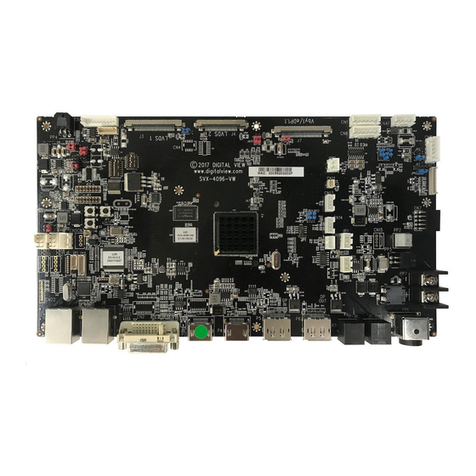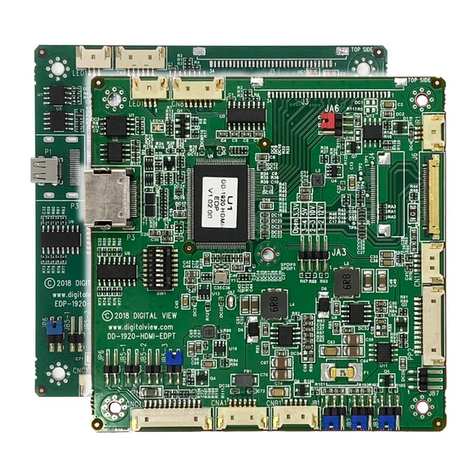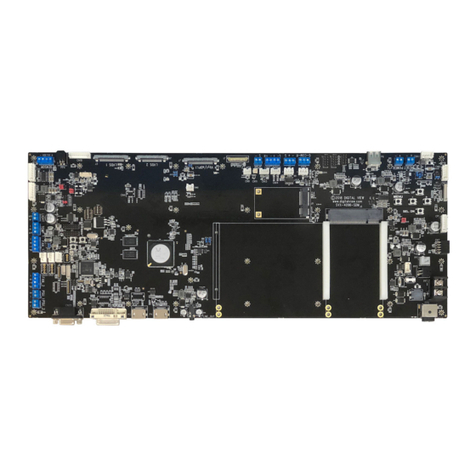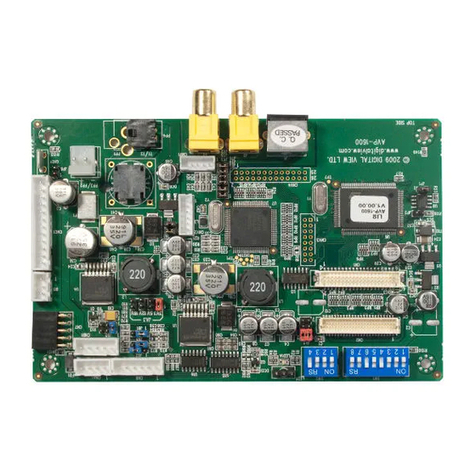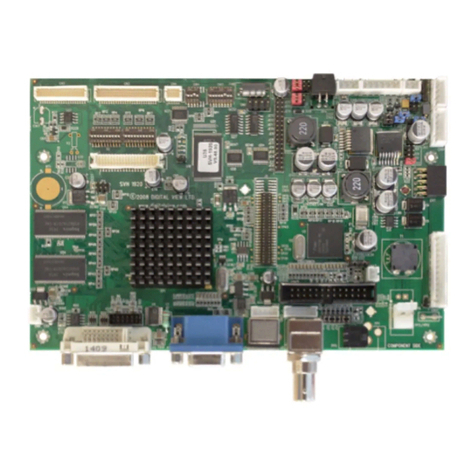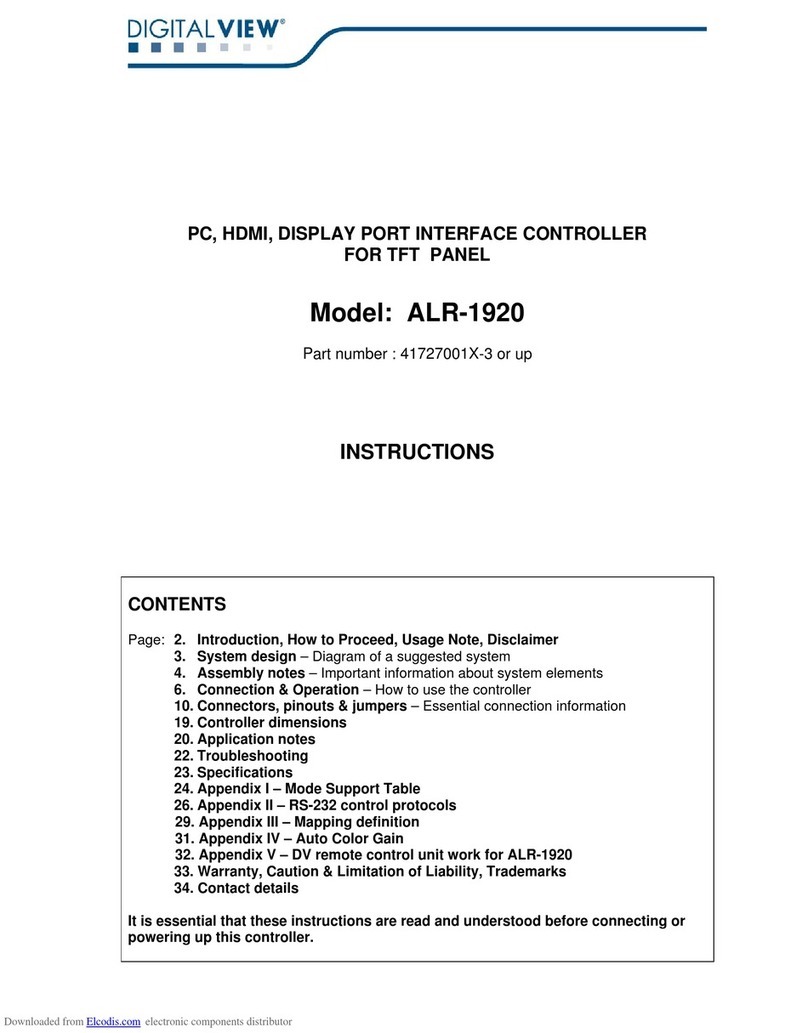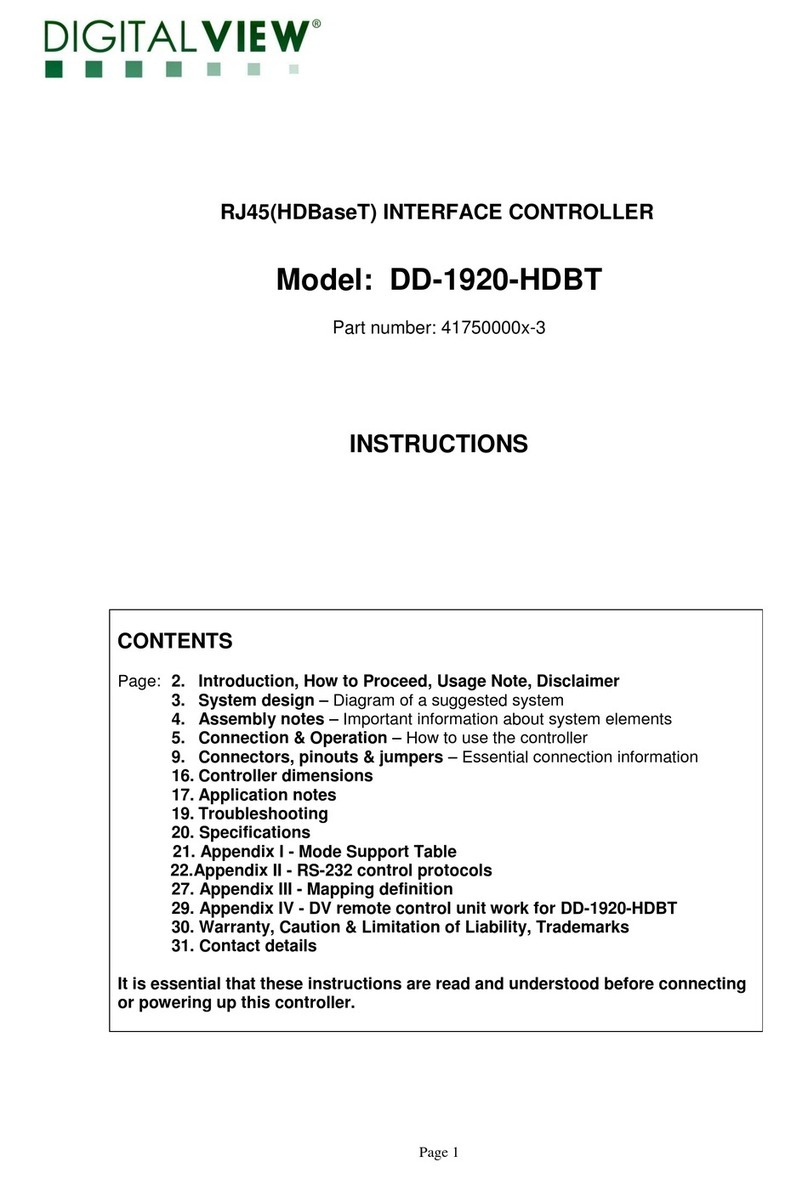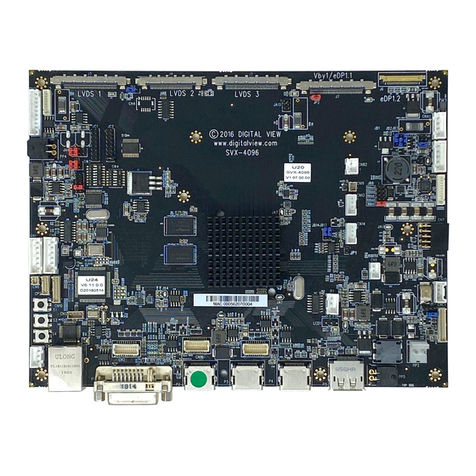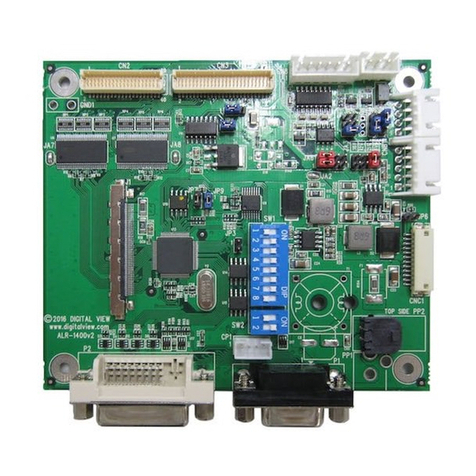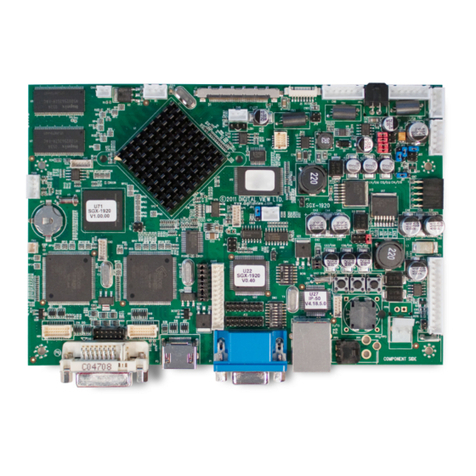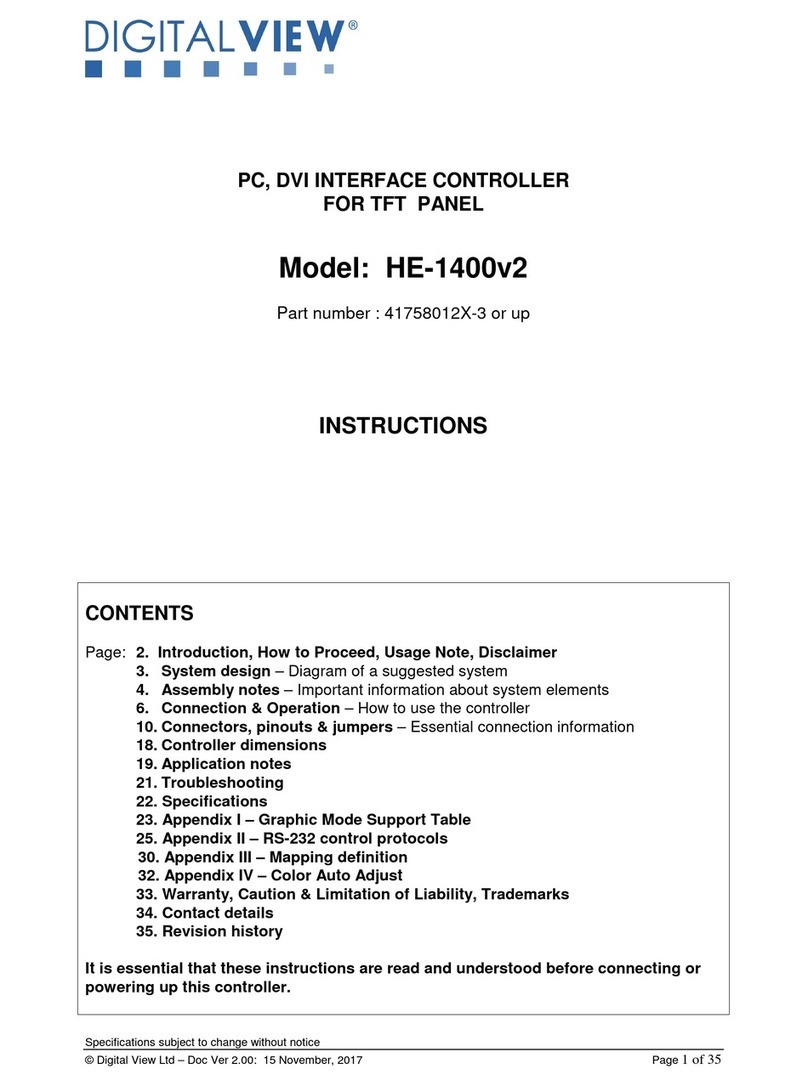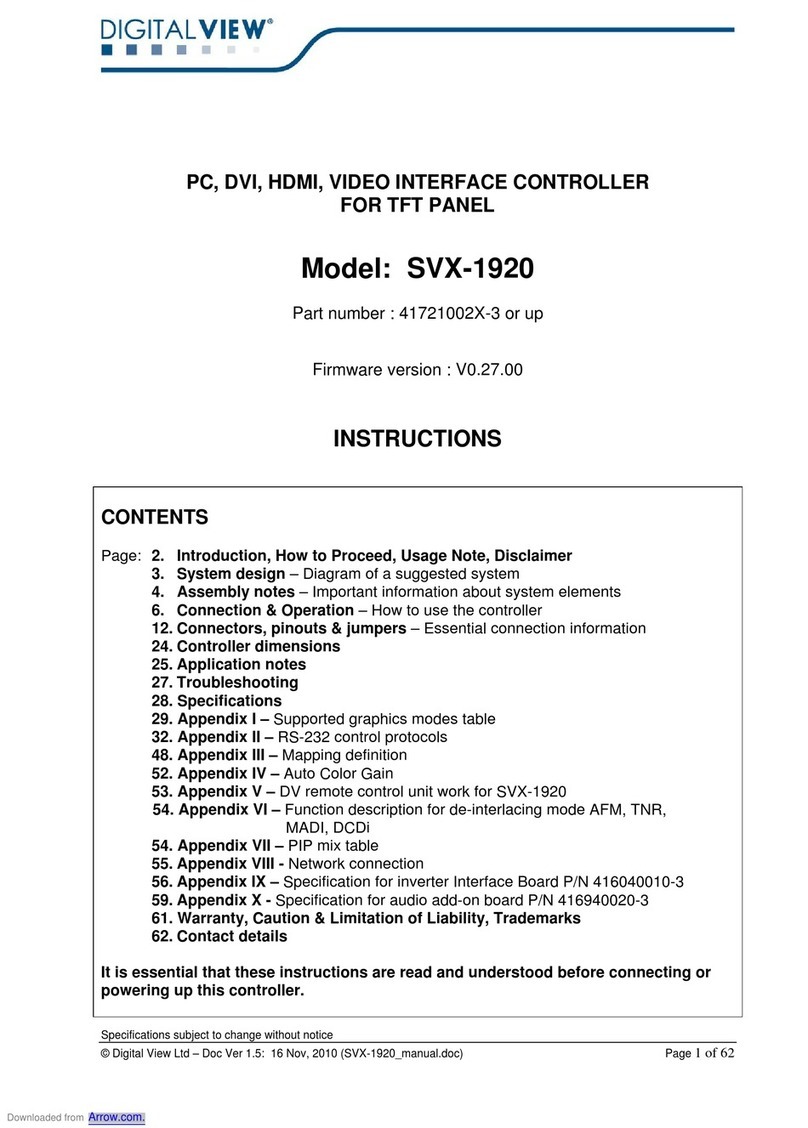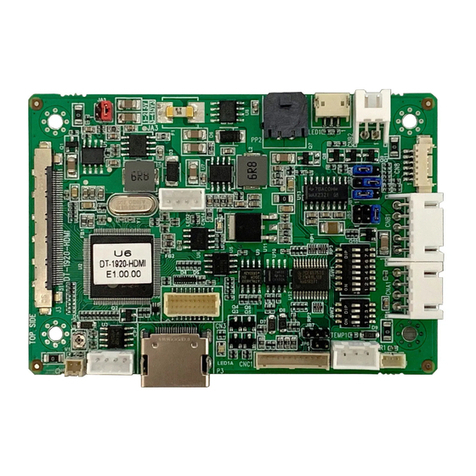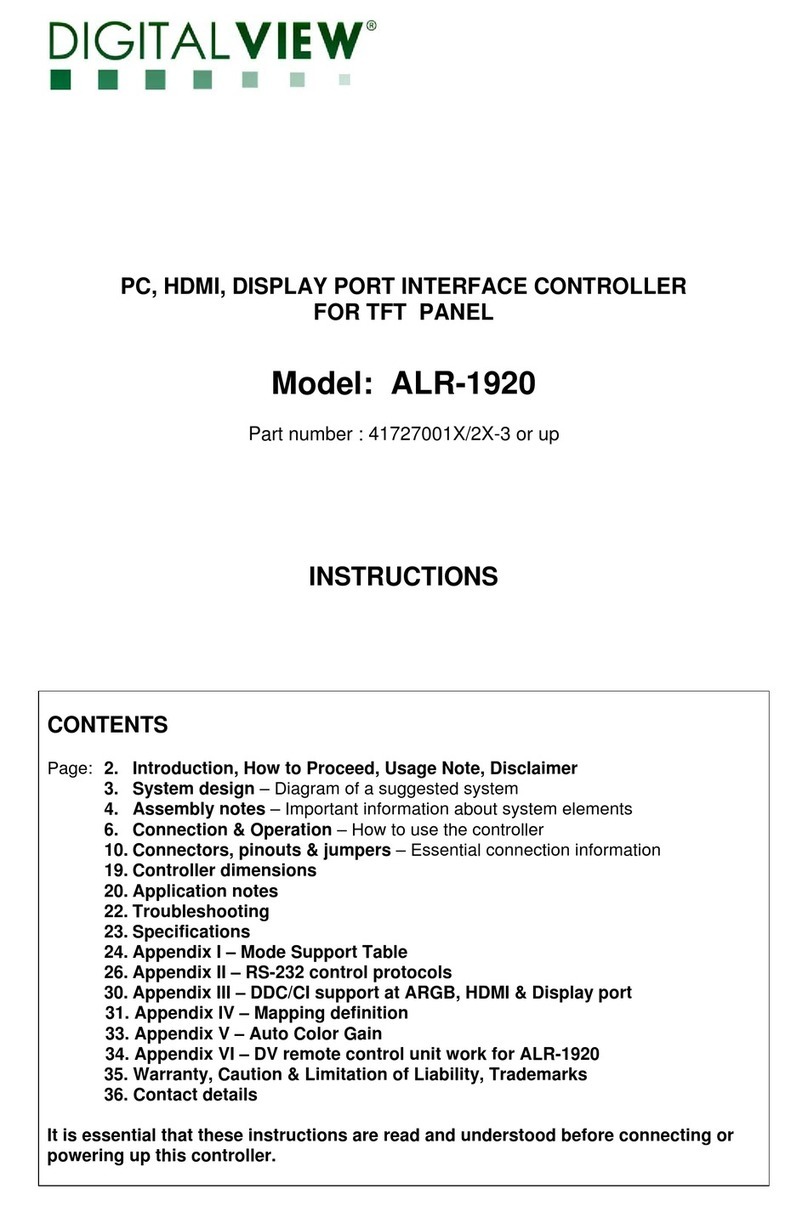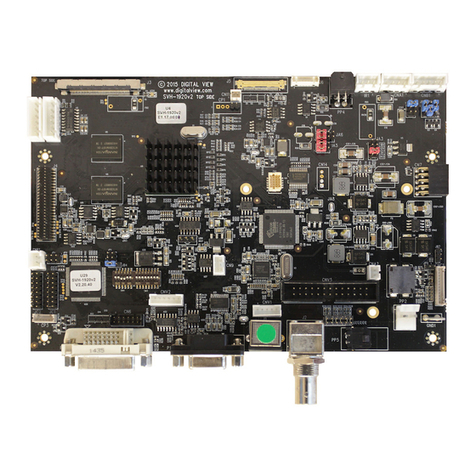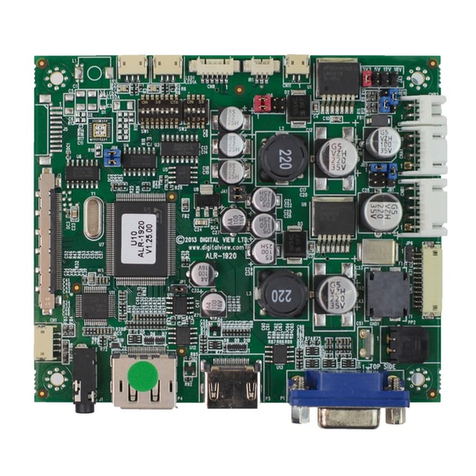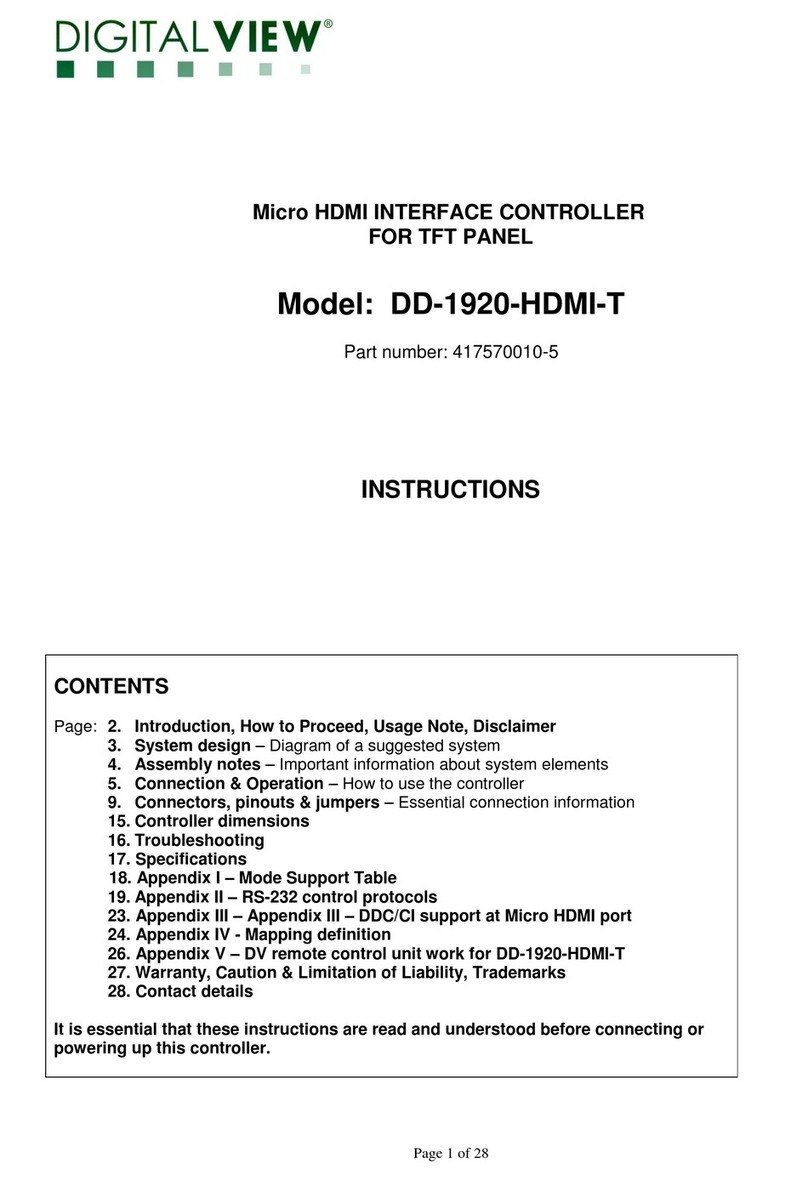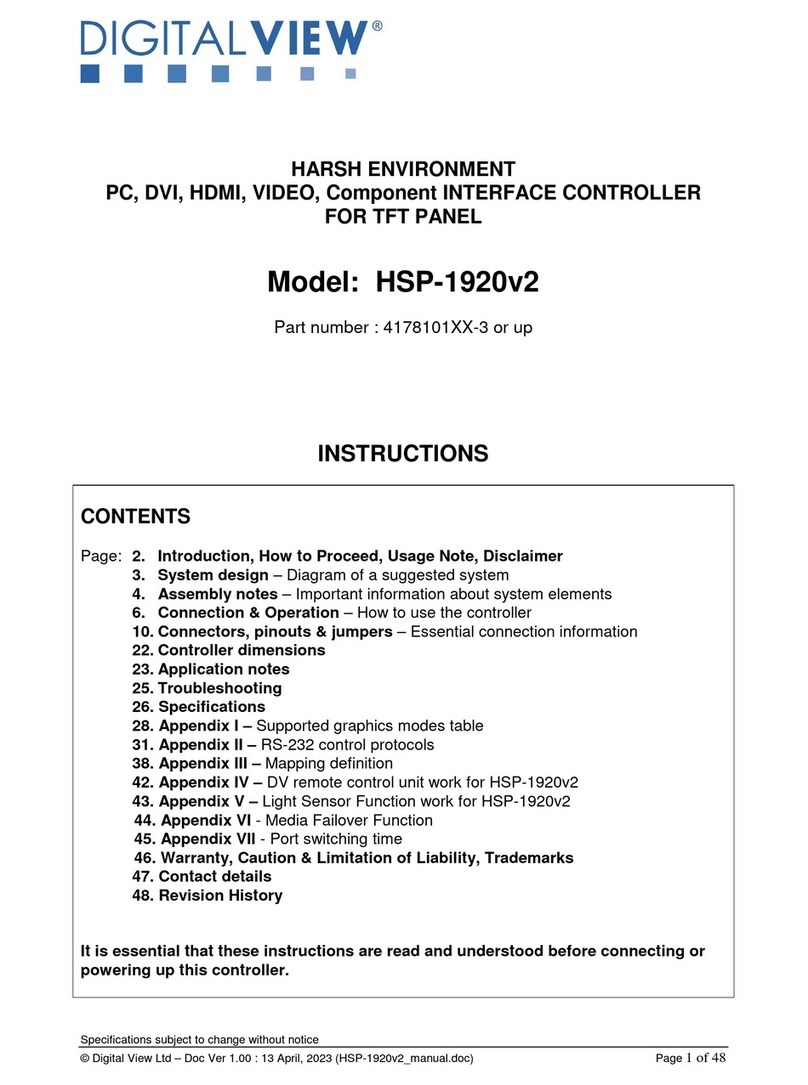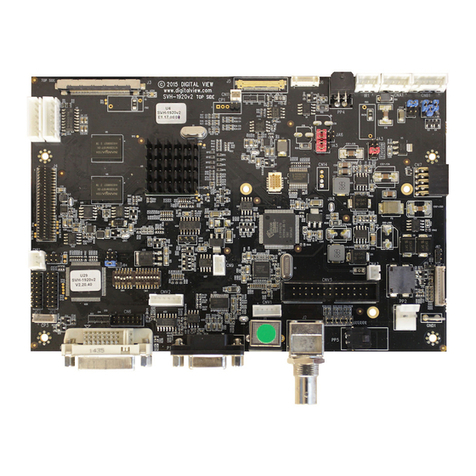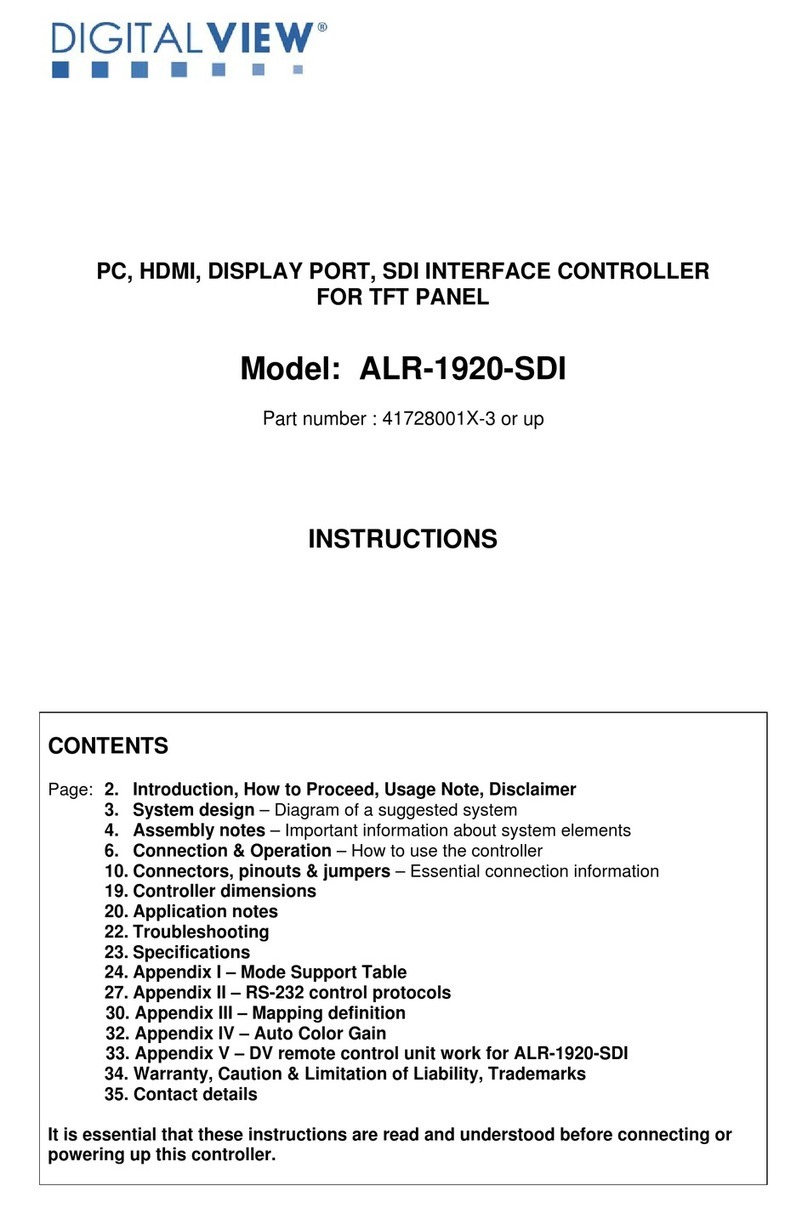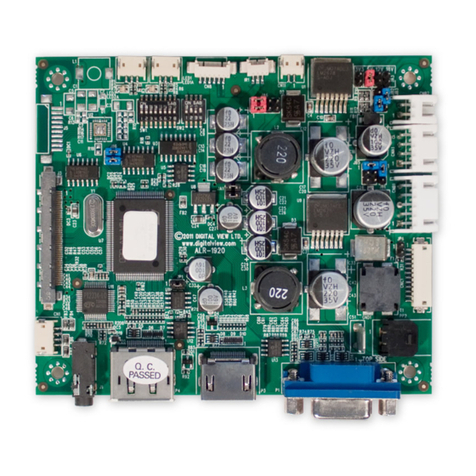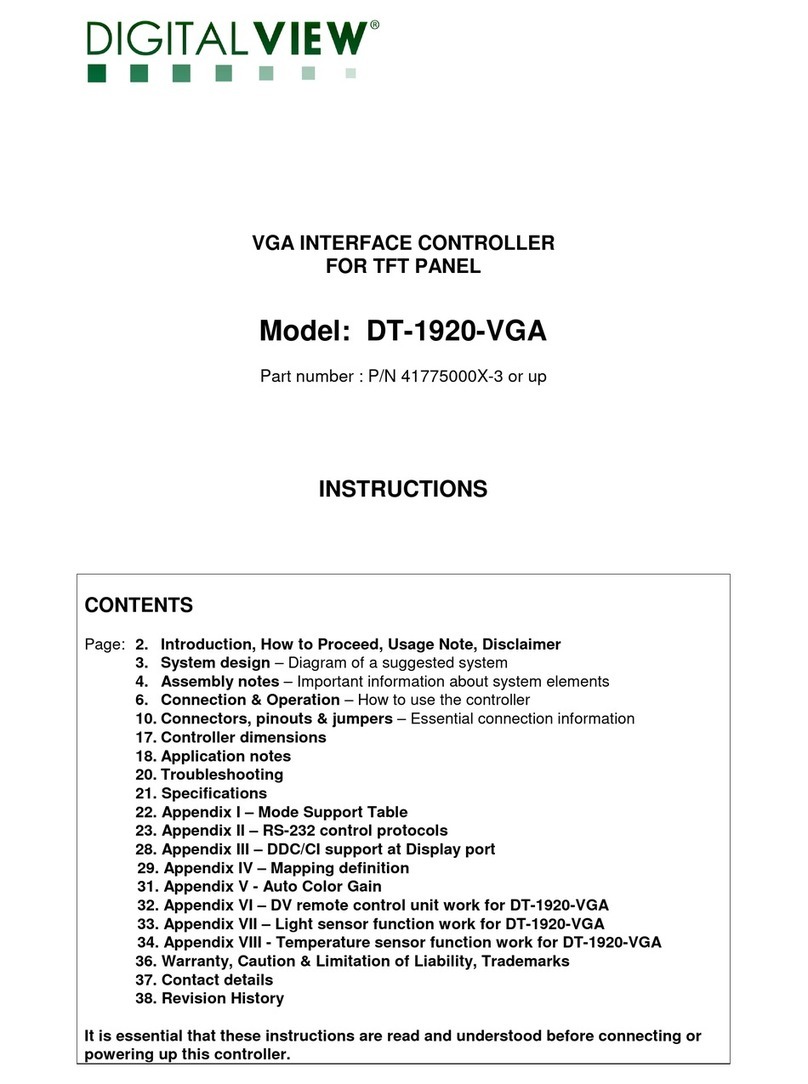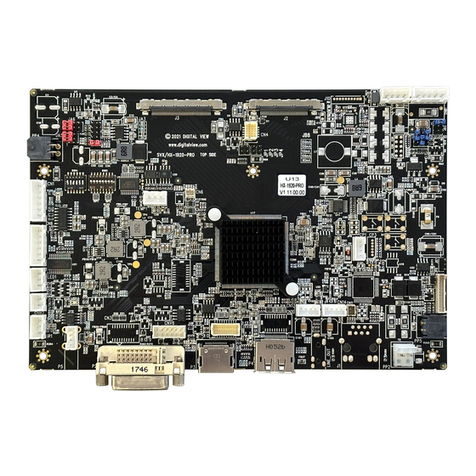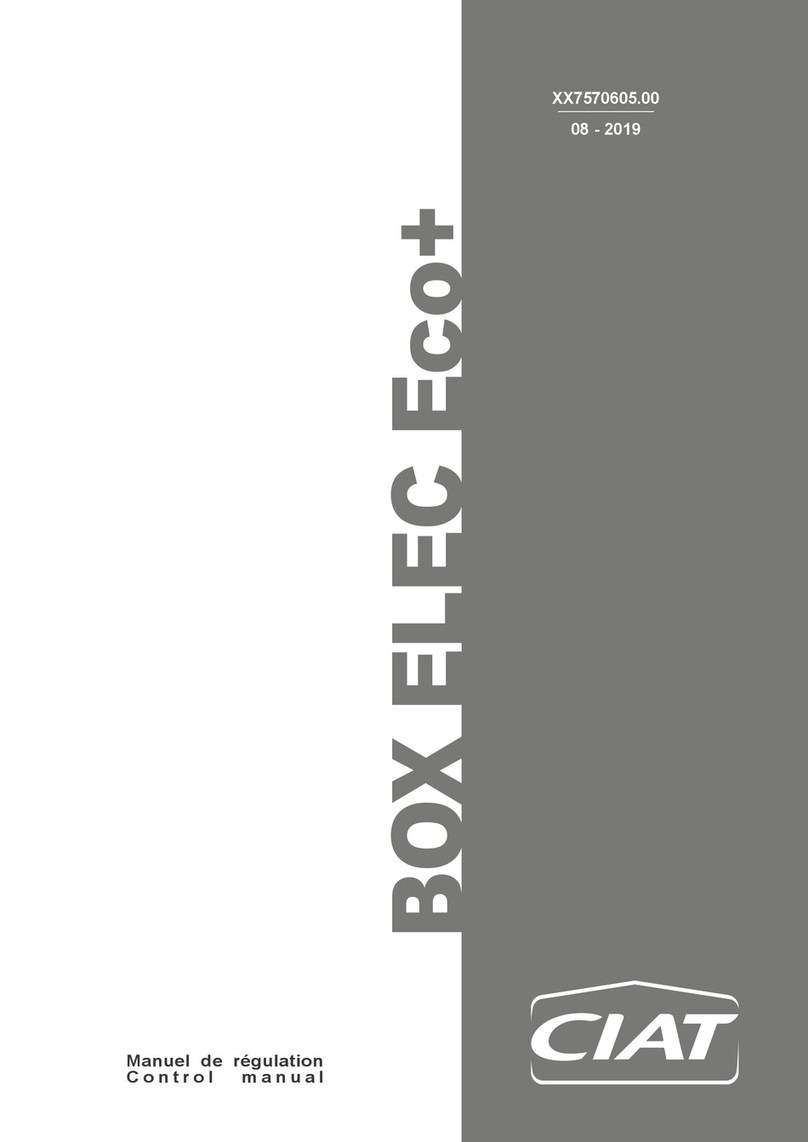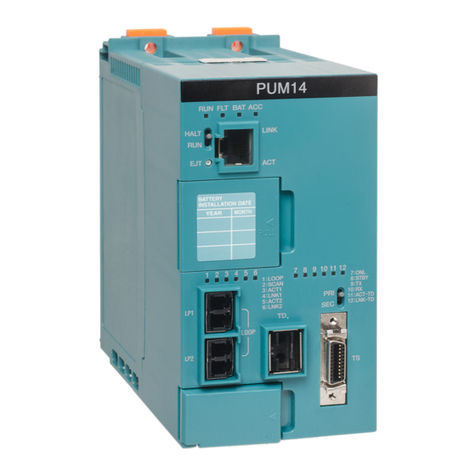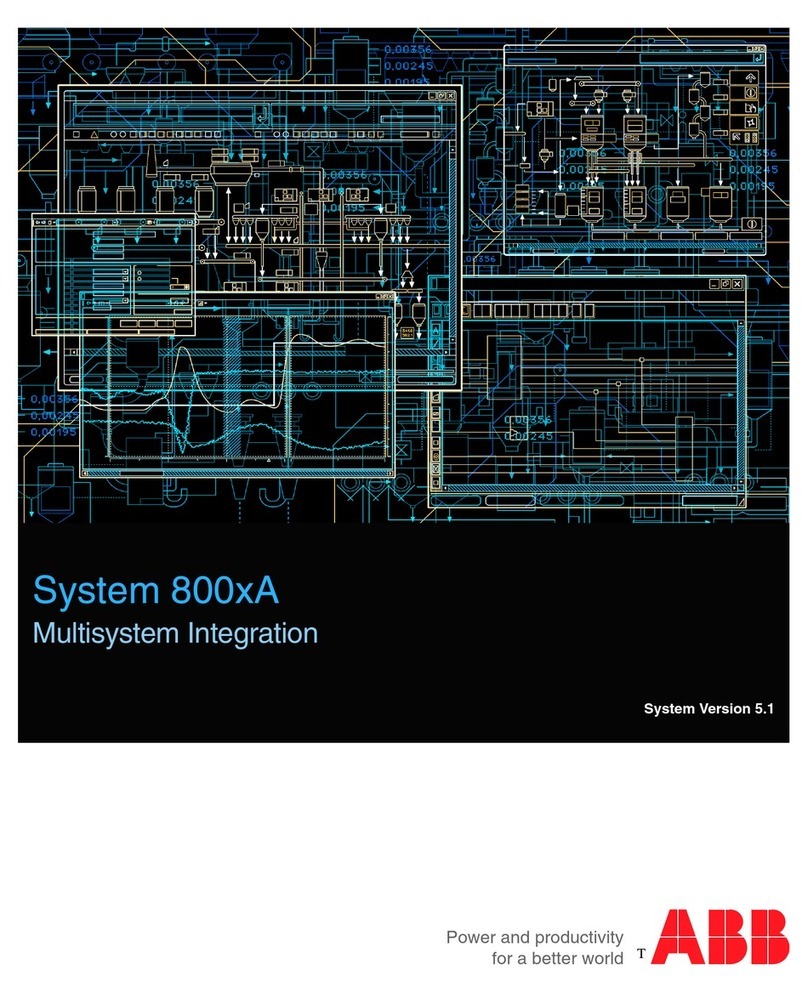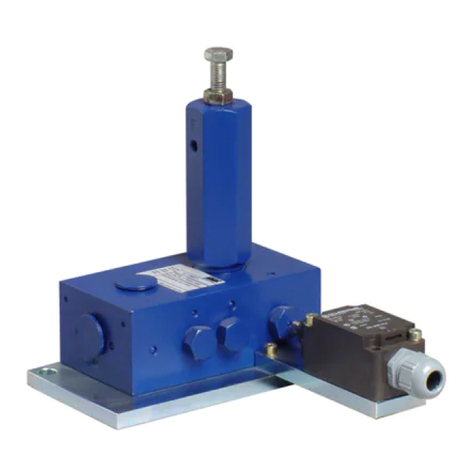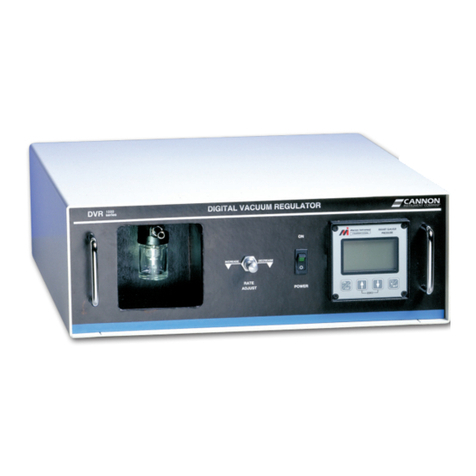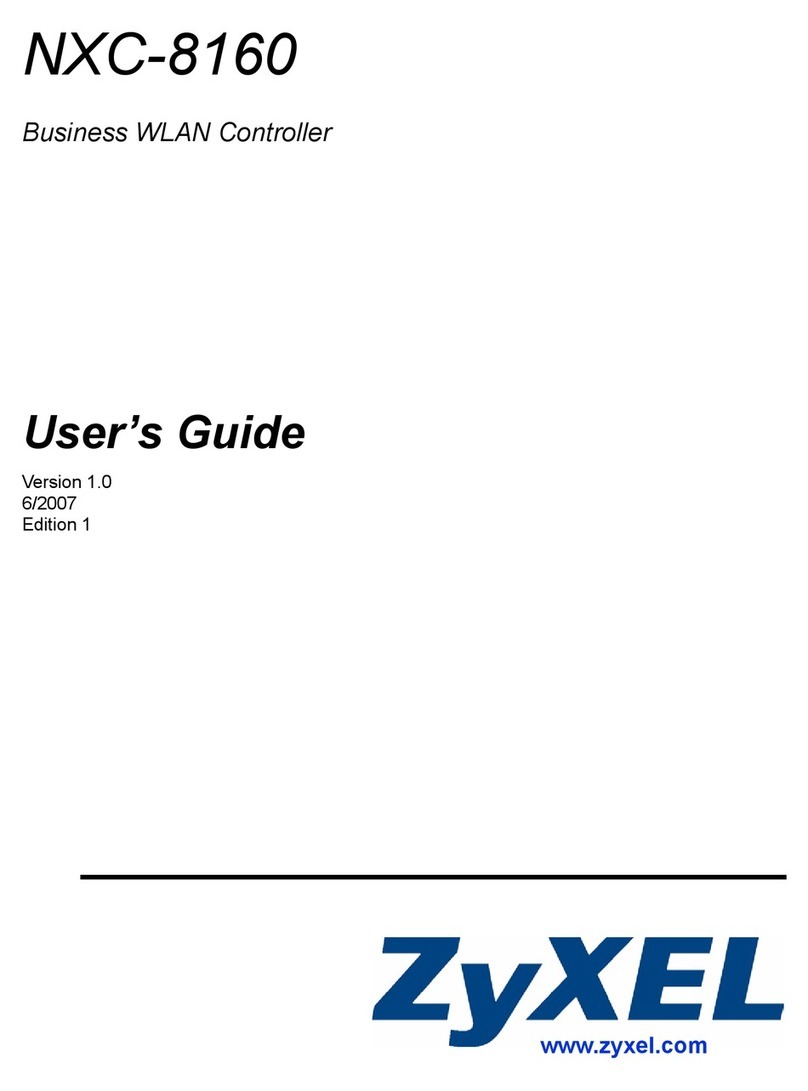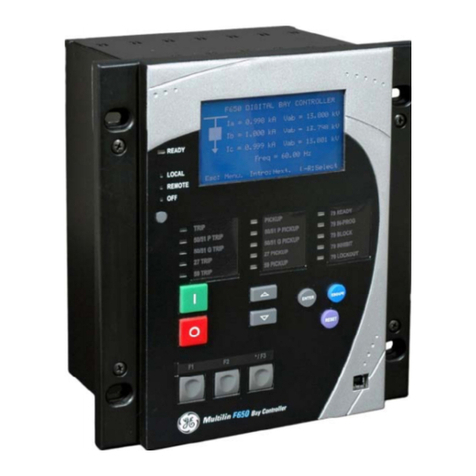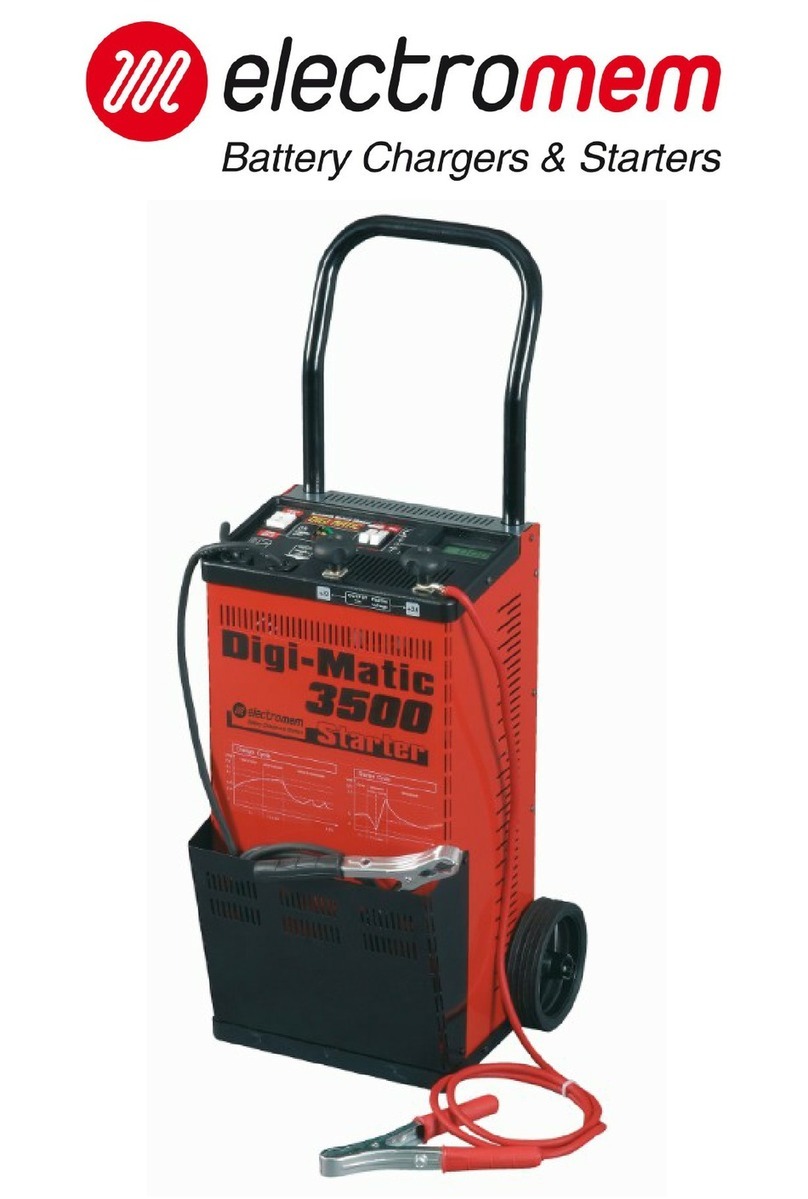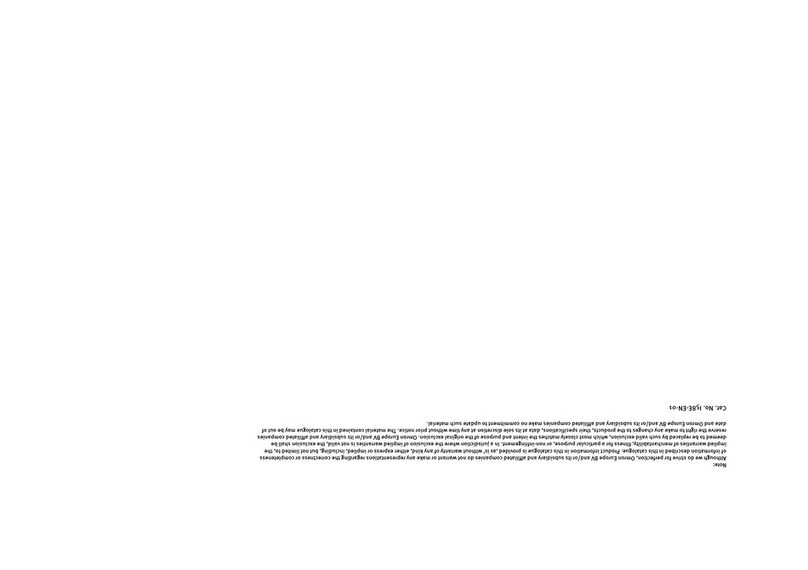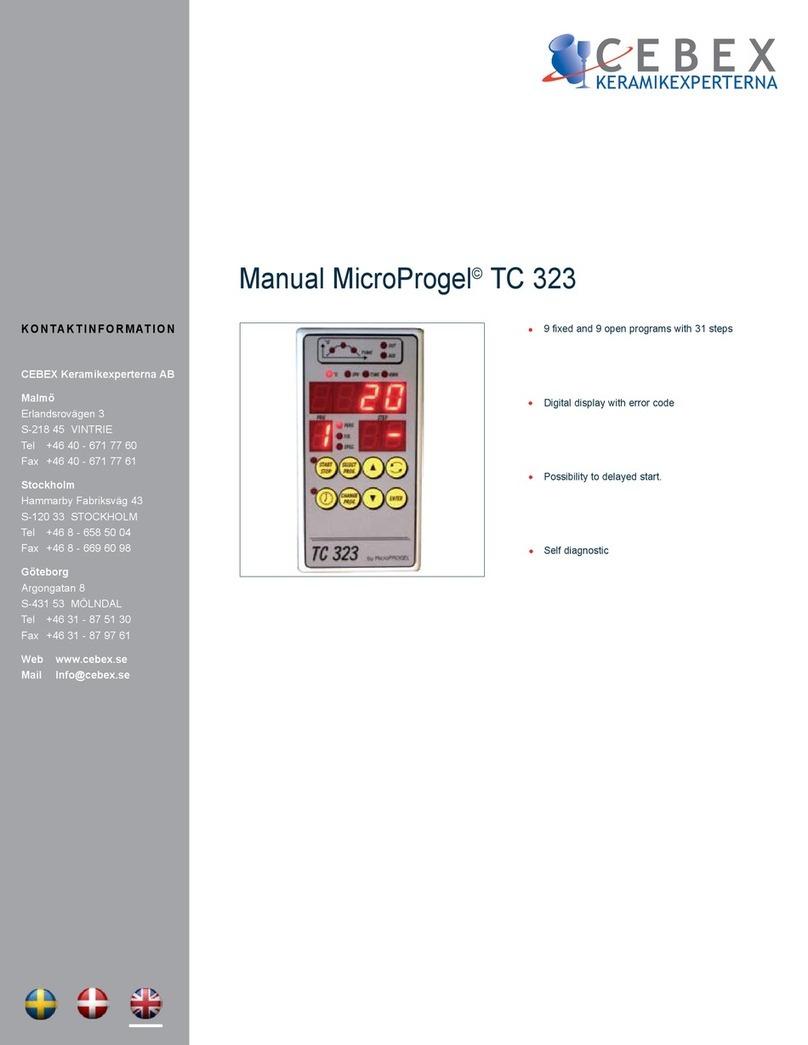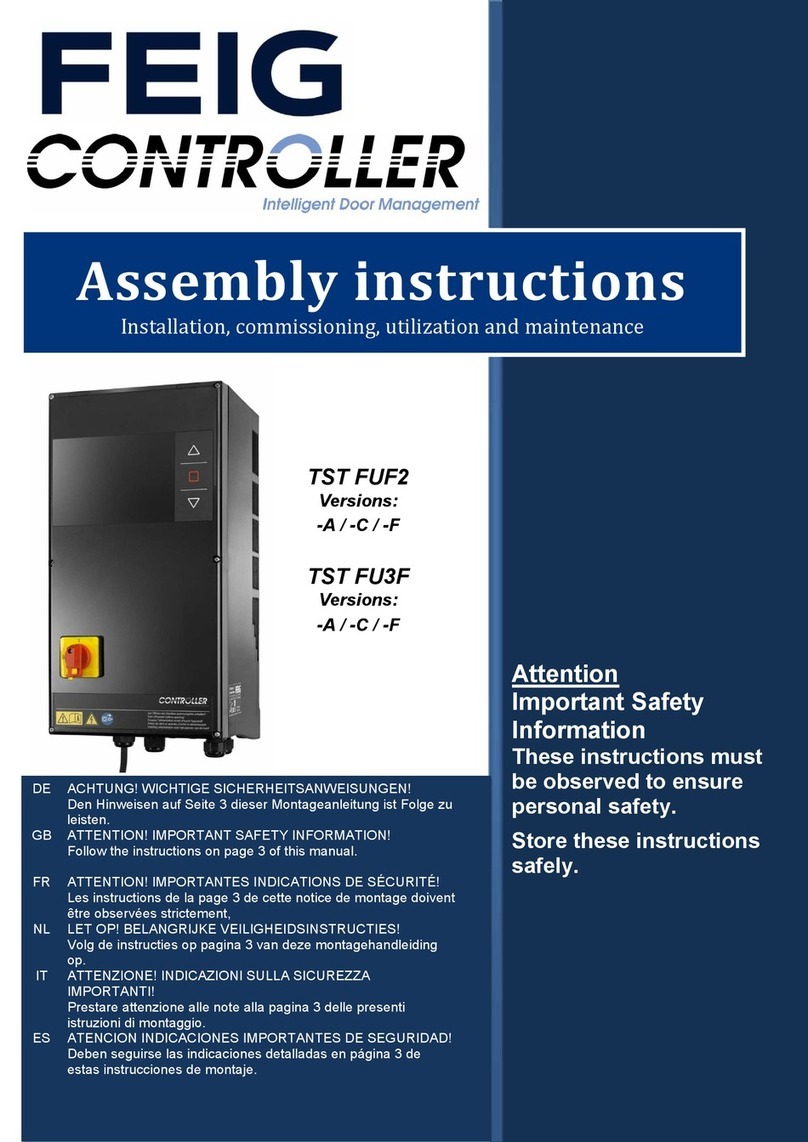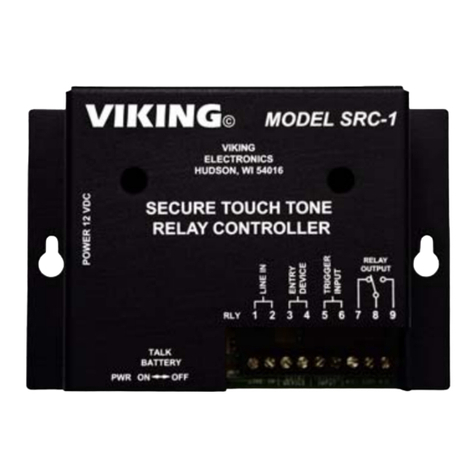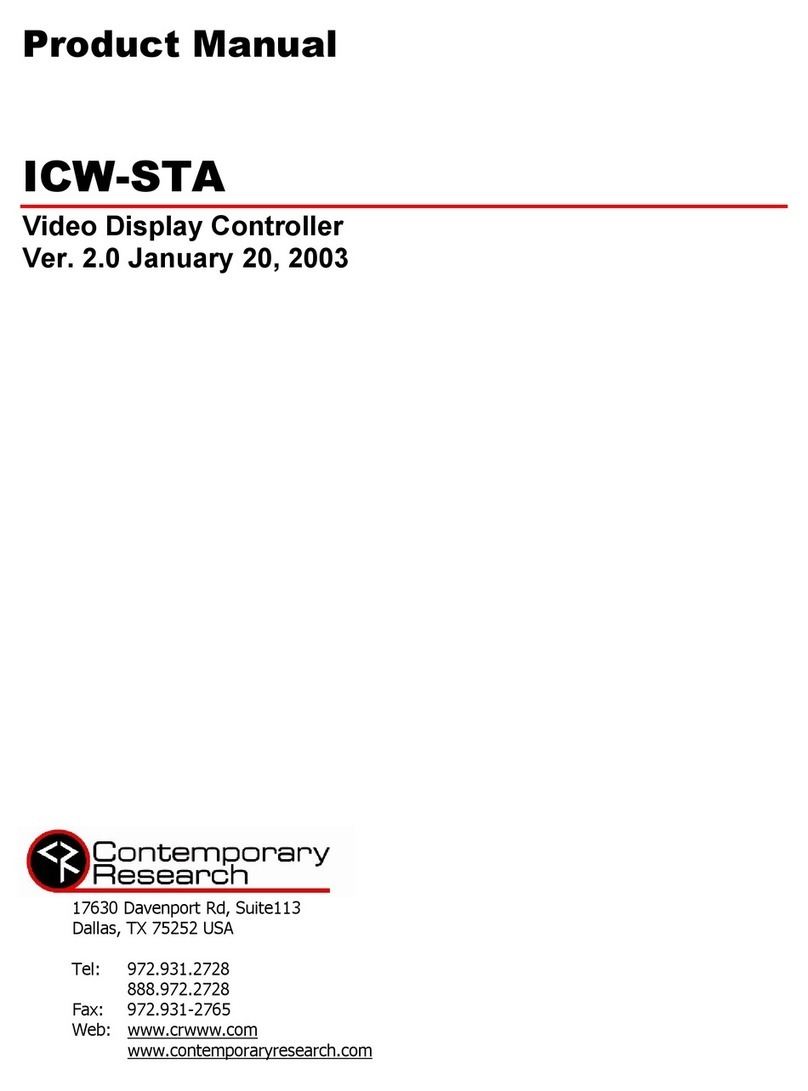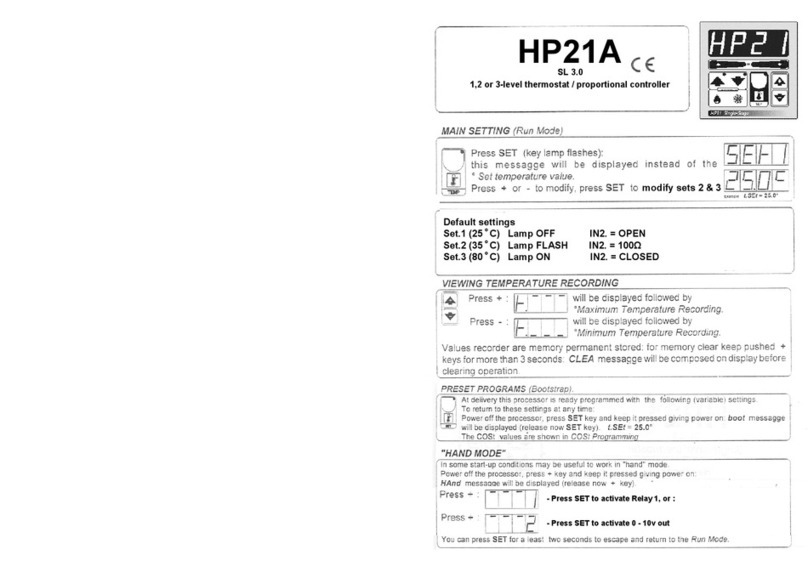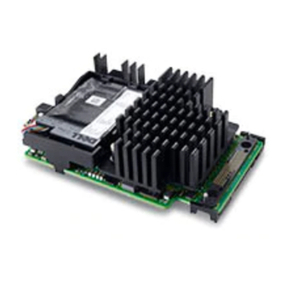
Specifications subject to change without notice
© Digital View Ltd – Rev 1.00 (SVX-1920-PRO_manual.doc) Page 4 of 44
ASSEMBLY NOTES
This controller is designed for monitor and custom display projects using 1920x1200 or 1920x1080 or 1600x1200 or
1680x1050 or 1440x900 or 1366x768 or 1280 x 1024 or 1024 x 768 or 800x600 or 640x480 resolution TFT panels with a VGA,
SVGA, WXGA, XGA, SXGA, UXGA or WUXGA signal input. The following provides some guidelines for installation and
preparation of a finished display solution.
Preparation: Before proceeding it is important to familiarize yourself with the parts making up the system and the various
connectors, mounting holes and general layout of the controller. As much as possible connectors have been labeled. Guides
to connectors and mounting holes are shown in the following relevant sections.
1. LCD Panel: This controller is designed for typical LVDS interfaced panels with panel voltage 3.3V(4A), 5V(4A), 10v(4A)
12V(4A) or 18V(3A), External for 12V~18V interface. Due to the variation between manufacturers of panels signal timing
and other panel
characteristics, factory setup and confirmation should be obtained before connecting to a panel. (NOTE:
Check panel power jumper settings before connection)
2. Controller: Handle the controller with care as static charge may damage electronic components. Make sure correct
jumper and dip switches settings to match the target LCD panel.
3. LCD signal cable (LVDS panel): In order to provide a clean signal it is recommended that LVDS signal cables are no
longer than 46cm (18 inches). If those wire cabling is utilized these can be made into a harness with cable ties. Care
should be taken when placing the cables to avoid signal interference. Additionally it may be necessary in some systems
to add ferrite cores to the cable to minimize signal noise.
4. Inverter: This will be required for the backlight of an LCD, some LCD panels have an inverter built in. As LCD panels
may have 1 or more backlight tubes and the power requirements for different panel backlights may vary it is important to
match the inverter in order to obtain optimum performance. See Application notes page 24 for more information on
connection.
5. Inverter Cables: Different inverter models require different cables and different pin assignment. Make sure correct cable
pin out to match inverter. Using wrong cable pin out may damage the inverter.
6. Function Controls: The following section discusses the controls required and the section on connectors provides the
detail. The controls are minimal: On/Off, Backlight Brightness (depends on inverter), OSD (5 momentary buttons) analog
VR type or (8 momentary buttons) digital type.
7. Function controls cable: The cables to the function switches should be of suitable quality and length so that impedance
does not affect performance. Generally lengths up to 1 meter (3 feet) should be acceptable.
8. Status LED: The pin direction of the LED should be corrected for right color indication. Red color stands for no signal and
backlight on. Orange color stands for no signal and backlight off. Green colors stands for signal on. The status LED is an
optional part only, can be unconnected.
9. IR sensor: It is an optional part only, can be unconnected if not using IR remote control. See Appendix IV in details.
10. RS-232 control interface : Serial control via this interface port.
11. Second RS-232 control interface : Secondary serial control via this interface port.
12. External panel power output : User for specific panel model.
13. Panel control signal : Reserved for GPIO control for NVIS application
14. Ambient light sensor connection : Support for connection using light sensor cable P/N 426305900-3 (1250mm) and
light sensor board P/N 416021310-3 via CN6 connector.
15. Backlight status input : 2 ways connector provides interface for connection with the specific panel type which support the
panel with backlight status monitoring function.
16. DVI-I input cable : Plug the DVI-I cable to the connector P2 on the controller board providing VGA and DVI-D inputs.
17. HDMI input : Support HDMI 1.4 standard. Plug the HDMI cable to the connector P3 on the controller board.
18. Analog RGB Input : As this may affect regulatory emission test results and the quality of the signal to the controller a
suitably shielded cable should be utilized.
19. Display Port input : Support single-link Display Port 1.2. Plug the Display Port cable to the connector P4 on
the controller board.
20. Audio Line in (Stereo) : The CN13 port supports Stereo audio line in.
21. Audio Line out (Stereo) output from HDMI or Displayport : The CN14 port supports Stereo audio line out from the
HDMI or Displayport audio source inputted. The audio output will follow the HDMI audio source.




















